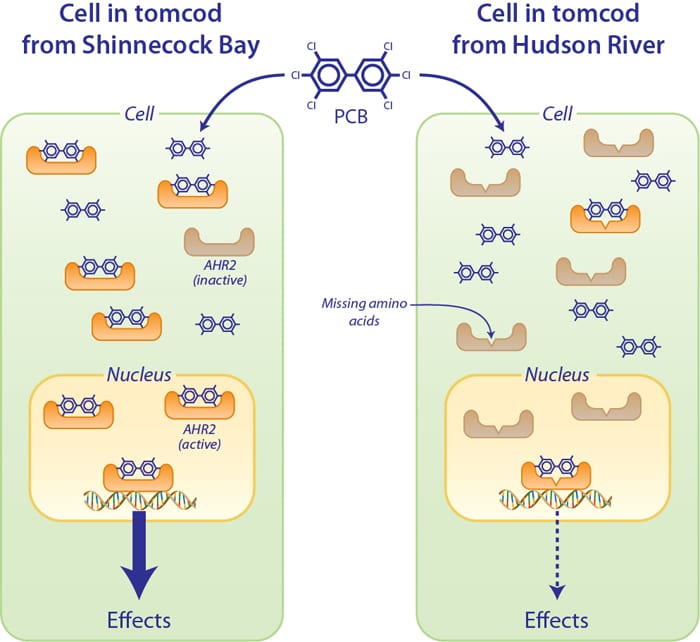Image
Resisting a Mess
July 3, 2011How do animals develop resistance to toxic pollutants? WHOI biologist Mark Hahn and Isaac Wirgin of New York University have been studying how Atlantic tomcod have adapted to high levels of PCBs and other pollutants. They found that tomcod from clean water in Shinnecock Bay (left panel) have a protein, called AHR2, that binds to PCBs and then moves into the cell nucleus and turns on genes that cause toxic effects. Tomcod from a Superfund site in the Hudson River (right panel) have an altered form of AHR2 that binds very little PCBs, preventing the appearance of toxic effects. While this enables the fish to live in polluted water, it may allow them to accumulate PCBs in their bodies, making them unsafe for other animals or humans to eat.(Illustration by Jack Cook, Woods Hole Oceanographic Institution)
Image and Visual Licensing
WHOI copyright digital assets (stills and video) contained on this website can be licensed for non-commercial use upon request and approval. Please contact WHOI Digital Assets at images@whoi.edu or (508) 289-2647.

